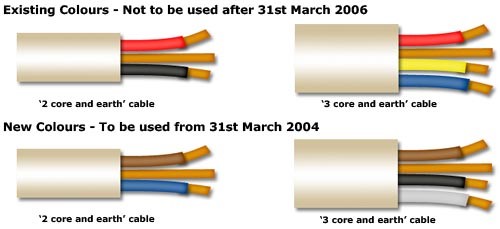Do not alter, interfere or modify electrical wiring unless competent to do so, at worst you could kill or seriously harm youself. If in doubt please contact a qualified electrician for further advice
Welcome to the Home Wiring Guide (UK) Home improvement can be a minefield, unexpected problems can cause grief and home wiring is one problems than most people hate. We here at the GUIDE hope that you can with our help and step by step guides will help to guide you through your home wiring projects.
Of the many kinds of home repairs, electrical ones tend to intimidate homeowners the most. Not only does wiring seem confusing, but the specter of electrical shock is scary. What most people don't realise, however, is that doing certain jobs on your home's electrical systems can be easy and safe if you follow basic safety precautions. The key to safety is to always disconnect the power from an electrical system before working on it.
Some electrical systems are safer and easier to work on than others: Most low-voltage, telephone, doorbell, and cable television wires, for example, are relatively harmless and easy to handle compared to standard-voltage lights and sockets. Lights, sockets, and appliances are all connected to the primary standard-voltage system (230VAC to 240VAC) that is delivered through power lines by your electrical utility and then routed throughout your home's wiring. Before working on any elements of the primary electrical system in your home, you must disconnect the power. Turning off a wall switch does not necessarily turn off the power to its fixture or socket; you must shut off the power at the circuit breaker.
Three wires enter most homes from the power provider: Live (240VAC), Neutral (0VAC) and Earth.
Below is the standard colour coding for these, the top line is the old colour coding and the bottom line has the new Colour coding as from March 2006. In addition, most homes have low-voltage electrical systems, with transformers that convert standard power to a lower, safer voltage (typically from 6 to 12 volts) for doorbells, intercoms, security systems, low-voltage interior and exterior lighting, and the like.

Low-voltage electricity is also delivered through telephone lines for ringing phones. Audio and video or cable television signals travel through cables that, under normal circumstances, have no voltage. Please read the following information from the HSE website regarding the number of deaths per year at work -
HSE data on Electrical safety at work
Please visit the following HSE Site for further details - https://www.hse.gov.uk/electricity/
D i s c l a i m e r
Whether you're starting a fresh or a competent electrical person, be sure to read and study the following pages, if you have further questions please consult a qualified electrician, it's better safe than sorry -
Don't forget - Electricity KILLS....
Please ISOLATE at the main distribution board
before removing any socket or switch cover
Vistor Count
Copyright © Home Wiring Guide 2022

